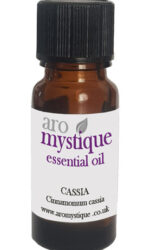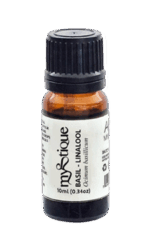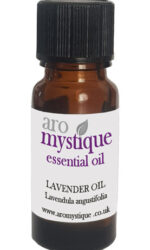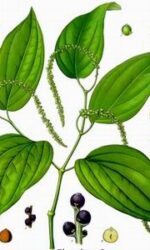Description
Details
Plant/Part: Bush/Stem/Branches (Source : North Africa, Asia, Somalia)
Latin Name: Commiphora Murrha
Family: Burseraceae
Extraction: Distillation
AROMA: Smoky, gum-like and slightly musky.
PROPERTIES: Myrrh has been used since ancient times as a sacred incense, a perfume, and as a therapeutic agent. It has a rich, smoky, balsamic odour and is soothing to the skin, centring, visualising and meditative. The sap or resin from a tree rather than a true essential oil. One of the oldest-known perfume materials. Myrrh has a long history of use as incense, especially with frankincense. Add to cream for protecting against cracking and chapping in the cold. Used as a fixative in perfumery. Seems to give a lift to feelings of weakness, apathy and lack of incentive. However, also said to have a cooling effect on heated emotions. Said to stimulate white blood corpuscles and invigorate the immune system.
Its direct anti-microbe effect helps quick recovery from disease. Principally has a drying action and effective against excessive mucous In the lungs. It is said to work powerfully on pulmonary complaints generally, being cleansing in action and treating such ailments as bronchitis, cold s, sore throats, catarrh, pharyngitis and coughs. Supposedly helpful with glandular fever, a virus accompanied by sore throat. Excellent for all mouth and gum disorders – said to be about the best treatment for ulcers, pyorrhoea, gingivitis and spongy gums. May also help with bad breath due to abnormal gastric fermentation’s. A tonic to the stomach therefore, stimulating appetite, stemming diarrhoea, easing flatulence, acidity and piles.
CHEMICAL CONSTITUENTS: Herabolene, Limone, Dipentene, Pinene, Eugenol.
PRECAUTIONS: During pregnancy use Myrrh only in moderation.
BLENDS: Benozin, Clove, Frankincense, Lavender, Patchouli, Sandalwood.
USES:
Digestive: stimulates the production of gastric juices(carminative), tones the digestive tract. used to treat diarrhoea, flatulence, dyspepsia, loss of appetite.
Genito-Urinary: stimulates the production of menstrual blood (emmenagogue).used to treat genital infections, leucorrhoea, thrush, scanty periods.
Circulation: used for haemorrhoids.
Muscles/Joints: used to treat arthritis.
Respiratory: helps to expel mucus, strengthens the lungs. used for flu, catarrh, bronchitis, asthma, sore throat.
Immune System: strengthens by stimulating the production of white blood cells.
Skin/Hair: antiseptic, astringent, reduces inflammation, improves circulation, stimulates the regeneration of of skin cells, assists in the healing of wounds. used to treat eczema, wounds, wrinkles. very good for mature complexions or chapped and cracked skin.
Emotions/Mind: cooling, calming, strengthening, increases mental clarity and focus, helps to combat apathy. other: used for mouth ulcers and gum infections.
Myrrh is a resin produced by a small, tough, spiny tree which grows in semi-desert regions of Lybia, Iran, along the Red Sea and various areas in N.E. Africa. Commiphora myrrha is the main source, though several other varieties of Commiphora are sometimes used. The trees belong to the same botanical genus as Frankincense: the Burseraceae, and it is perhaps no accident that these two are commonly spoken of in one breath. They do have a number of features in common, though Myrrh has certain properties not attributable to Frankincense, and vice versa.
The liquid resin is exuded from natural cracks or cuts in the trunk and sets into irregularly shaped brownish-red lumps. Legend has it that shepherds whose goats browsed and rubbed .against the tree trunks, collected the resin that stuck to the goats’ beards! Modern harvesting owes less to chance and is carried out both by making systematic cuts in wild trees, and to a small extent from cultivated trees.
The essential oil is extracted from the resin by steam distillation, and is the same deep reddish-brown. It is a very thick, sticky oil, and may need to be warmed before it is possible to pour it from the bottle. It has a hot, smoky, bitter aromatic smell reminiscent perhaps of the climate in which the tough little tree survives. The active principles include pinene, dipentene, limonene, cadinene, formic acid, acetic acid, myrrholic acid, eugenol, several aldehydes and alcohols, and a number of resins.
In common with FRANKINCENSE, Myrrh was used in all the ancient civilisations as a perfume, incense and in medicine. It was highly valued as a healing ointment for wounds and it is said that no soldier of ancient Greece went into battle without a paste of Myrrh in his pouch. This use is well justified by what we know of Myrrh’s properties: antiseptic, healing, and anti-inflammatory. It is specially valuable for wounds that are slow to heal, and for ‘weepy’ skin conditions, including weepy ECZEMA and ATHLETE’S FOOT. For the latter, the fact that Myrrh is fungicidal is a double benefit. It heals cracked and chapped skin, and I often put just a little Myrrh in creams for deep cracks on the heels, and heavy-duty handcreams.
Myrrh is very good for the gums, and quickly heals mouth ulcers and gum disorders. The most convenient form in which to use it in the mouth is as Tincture of Myrrh: it does sting momentarily and tastes extremely bitter, but the healing effect is so marked that it is worth suffering these inconveniences. It is used in many brands of toothpaste for its beneficial effect on the gums, with oil of Peppermint added to mask the bitterness.
The area in which Myrrh overlaps most with its ‘cousin’ Frankincense is in treating chest infections, CATARRH, chronic BRONCHITIS, COLDS and sore throats. It is a very good pulmonary antiseptic, expectorant and astringent (i.e. it has a drying action on excess mucus). It can be used as a massage oil or in INHALATIONS. It is less useful as a bath oil, since it is very difficult indeed to dissolve, even in alcohol.
Some care needs to be used in handling Myrrh, as it is emmenagogic, and should not be used during pregnancy. It is said to have tonic and stimulating actions on the stomach and the whole digestive tract, and is a remedy for diarrhoea -again due to its astringent action. Gently massage the stomach and abdomen (always in a clockwise direction).
Because of the antifungal action of Myrrh, it can be used in a vaginal douche against Thrush. It will eliminate the itch and discharge effectively, but thought should also be given to the underlying Candida infection which leads to these symptoms, and Ti-tree oil, with perhaps a special dietary regime, used.






Reviews
There are no reviews yet.